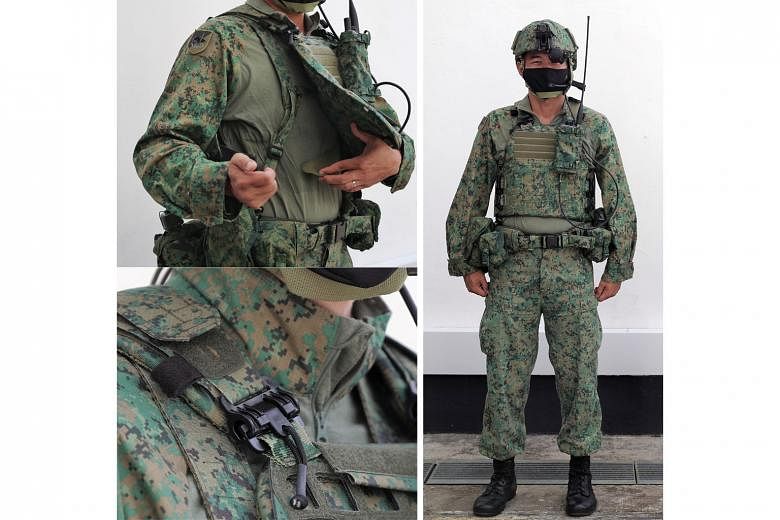Soldiers in the Singapore Army are now using improved helmets and better-fitting load-bearing systems made up of a vest and belt to carry their military gear.
For the first time, two variants of the vest-belt system - enhanced and standard - were developed to replace the previous integrated load-bearing vest, which has been in use since 2009.
Since January, full-time national servicemen, or NSFs, in combat units like the commandos, guards and infantry have been issued with the enhanced version of the vest-belt system that is more customisable and ergonomic.
It is also made to allow better heat dissipation, with the aim of boosting soldiers' combat effectiveness.
All other NSFs, such as those in combat support or combat service support vocations, will be issued the standard version from next year.
The announcement comes as the army marks its 55th anniversary this month since the passing of the Singapore Army Bill in Parliament in December 1965.
The new helmet and vest-belt system were shown to the press at Selarang Camp in Loyang recently.
The new system allows soldiers to carry the military gear they need when training outfield, such as their water bottle, ammunition or communications equipment.
Both types have a belt component with a buckle, and straps that go over the shoulders. The belt, intended to be worn on the hips to reduce shoulder strain, is worn separately from the vest, which covers the torso area.
Modular design allows for customisation
Both types also feature multiple points of adjustment to help ensure a better fit. The enhanced version also includes a removable body armour carrier.
Since July last year, recruits have been issued with the belt for training. When they go to other units for further training, they will be given either the enhanced or standard vest, depending on their unit.
The Defence Ministry said the new vest-belt systems are made from a strong yet lightweight material that offers better comfort and improves heat dissipation by about 30 per cent.
The new helmet, which was rolled out from October last year, is about 10 per cent lighter than the previous one. Its high-cut design allows better compatibility with other equipment worn on the head, such as ear mufflers, communication headsets and night-vision devices.
It also has an adjustable padding system for a more comfortable fit.
Lieutenant-Colonel Ho Chee Leong, head of the Centre of Excellence for Soldier Performance (CESP), said the new equipment provides soldiers with better comfort and fit, and more importantly, helps make them more effective in combat.
The modular design of the equipment also allows soldiers to customise it based on their mission profiles, so that they do not have to wear the full configuration all the time, which helps reduce heat strain, he added.
A raft of agencies - such as the army's infantry and supply headquarters, CESP, the Defence Science and Technology Agency, DSO National Laboratories and ST Logistics - worked together to evaluate the enhanced personal equipment, which had been under development since 2016.
At the moment, there are no plans to equip operationally ready national servicemen with the new helmets or vest-belt systems. However, some artillery units will receive the new helmet because it offers better compatibility with the ear protection equipment they use.
Officer Cadet Ajey Jeyakumar, 20, who has been using the new helmet since June, said he was able to adjust the inside padding to make the helmet fit better.
He said: "It's good because during long missions, I have to wear my helmet for long periods of time and still stay comfortable."


